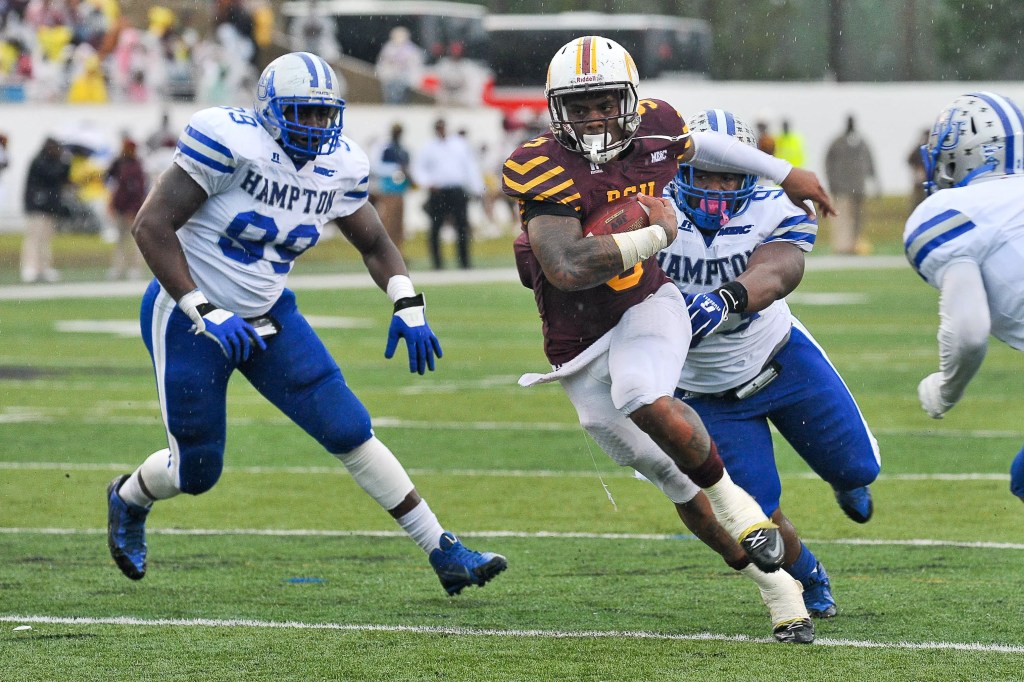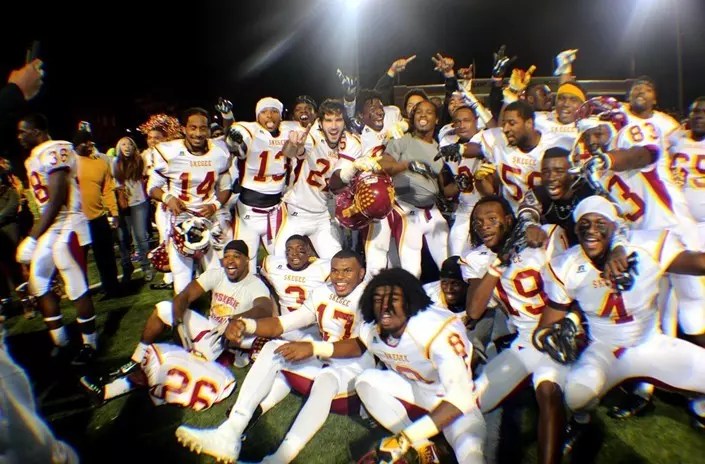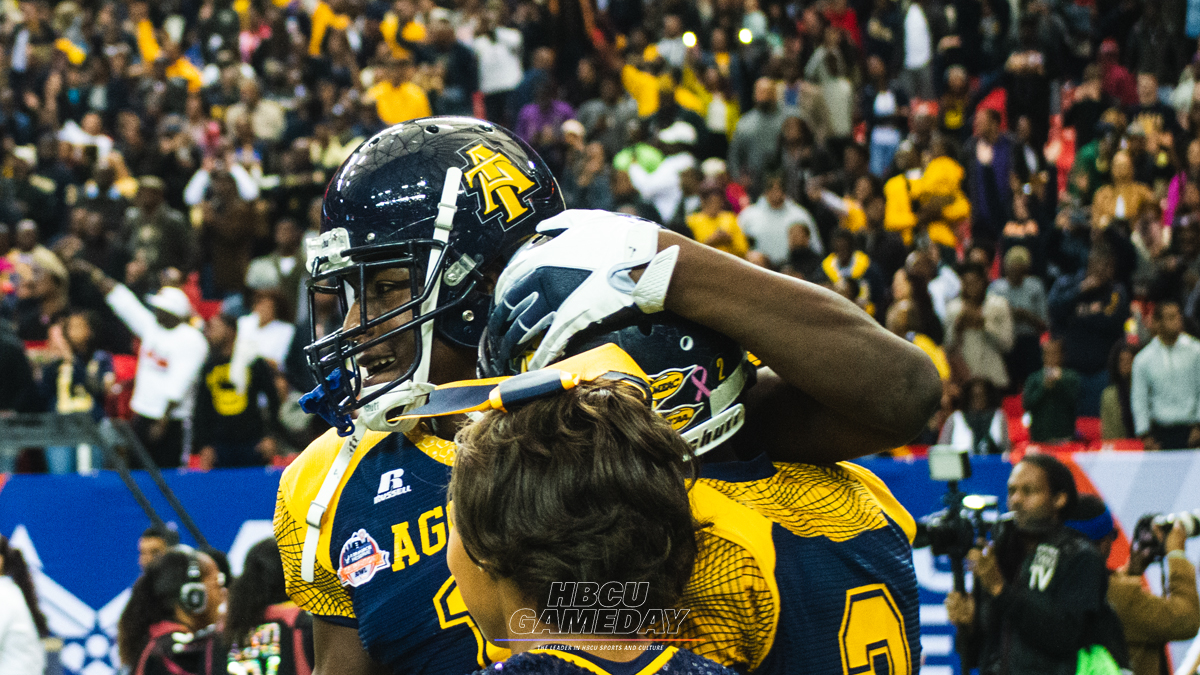HBCU football, like the rest of college football, has had its fair share of dynasties — dating back to the turn of the 20th century when private schools ruled the day.
The discussion around North Carolina A&T’s fall from grace has sparked many discussions about just how long an HBCU dynasty can last in modern times.
To determine the average run of the top HBCU football programs from each of these conferences (MEAC, SWAC, CIAA, and SIAC), we evaluated several key factors:
1. Championship Frequency
- How often do certain schools win or compete for championships?
- Which teams dominate over extended periods?
2. Coaching Stability
- Coaches with long tenures often lead to sustained success. We’ll analyze how different coaches impacted a team’s performance over time.
3. Cycles of Success
- Programs often experience peaks and troughs due to recruiting, coaching changes, or shifts in competitive balance.
Here’s a brief breakdown of trends based on the championship data since 1999.

MEAC
From 1999 to 2023:
- South Carolina State (Oliver Pough era): Consistent dominance, especially from 2008 to 2010. They had multiple title runs in the late 2000s and still managed a conference title in 2021.
- North Carolina A&T (Rod Broadway and Sam Washington): Peaked in the 2010s with titles in 2015, 2017, and 2019. A&T also dominated the Celebration Bowl era, becoming the top program in the MEAC.
- Bethune–Cookman (Alvin Wyatt, Brian Jenkins): Strong in the early 2000s and another run from 2012-2015 under Brian Jenkins and Terry Sims.
- Florida A&M had strong early 2000s runs but struggled to maintain that level. Recently rejoined the SWAC, which changes the competitive landscape.
Average Run
- Programs like South Carolina State and North Carolina A&T had sustained runs of 3-5 years of dominance, followed by a slight drop and resurgence, especially for A&T. The average period of peak performance seems to be around 3-4 years per program.
SWAC
From 1999 to 2023:
- Grambling (Doug Williams era+ multiple coaches): Dominated the early 2000s, winning titles in 2000, 2001, 2002, 2005, 2008, and 2016-2017.
- Southern was strong in the early 2000s but saw its dominance broken up by Grambling and other emerging teams.
- Jackson State (Deion Sanders): 2021-2022 marked a new era of dominance for Jackson State, although Sanders’ departure has led to questions about future consistency.
- Alcorn State (Jay Hopson,Fred McNair): Alcorn had a long stretch of success, reaching the SWAC Championship from 2014 to 2019, showing remarkable consistency.
- Alabama A&M: Intermittent success, particularly in 2006 and again in 2020, but less sustained.
Average Run
- Grambling had extended runs of 3-4 years at a time, while Alcorn State maintained 5-6 years of competitive excellence. The SWAC’s average program dominance seems to span around 4-5 years before a shift in power. But possibly even shorter now with coaching departures.
CIAA
From 1999 to 2023:
- Winston-Salem State (Connell Maynor era): Dominated from 2011-2016, including a 2012 national championship game appearance.
- Bowie State: A more recent power, Bowie won consecutive titles in 2018 and 2019, extending through 2021.
- Virginia State: Competitive with titles in 2014 and 2017, highlighting cycles of competitiveness across programs.
- Fayetteville State: Had early success in the 2000s and returned to the top in 2022.
- Shaw University had a string of dominance from 2004-2010.
Average Run
- Historically, teams like Winston-Salem State had runs of 5-6 years, but programs like Bowie State and Virginia State have showcased cycles of dominance of about 3-5 years.

SIAC
From 1999 to 2023:
- Tuskegee: Dominated the 2000s and late 2010s, with long stretches of titles and playoff appearances.
- Albany State: A major contender throughout the 2000s and again in 2013-2021.
- Miles College: Emerged in the 2010s with multiple titles in 2011, 2015, and 2018-2019.
- Benedict College: Most recent champion (2022-2023), showing their rise to prominence. Coaching change may cut that short.
Average Run
- Teams like Tuskegee and Albany State had multiple periods of success that spanned 4-5 years, with Miles College and Benedict now becoming key players.
Conclusion: Cyclical Success
Across HBCU football programs, success tends to come in cycles of around 3-5 years for most programs, with the occasional program (like Grambling or Tuskegee) extending dominance over a longer period. This reflects natural shifts due to coaching changes, recruiting cycles, and changes in conference dynamics. The most dominant runs often come from stability in leadership and strong recruiting pipelines.
(Go to Page 2 to find out how these dynasties rise and fall)
